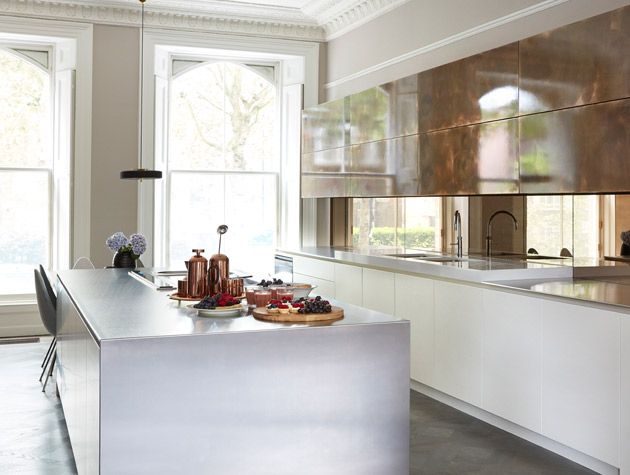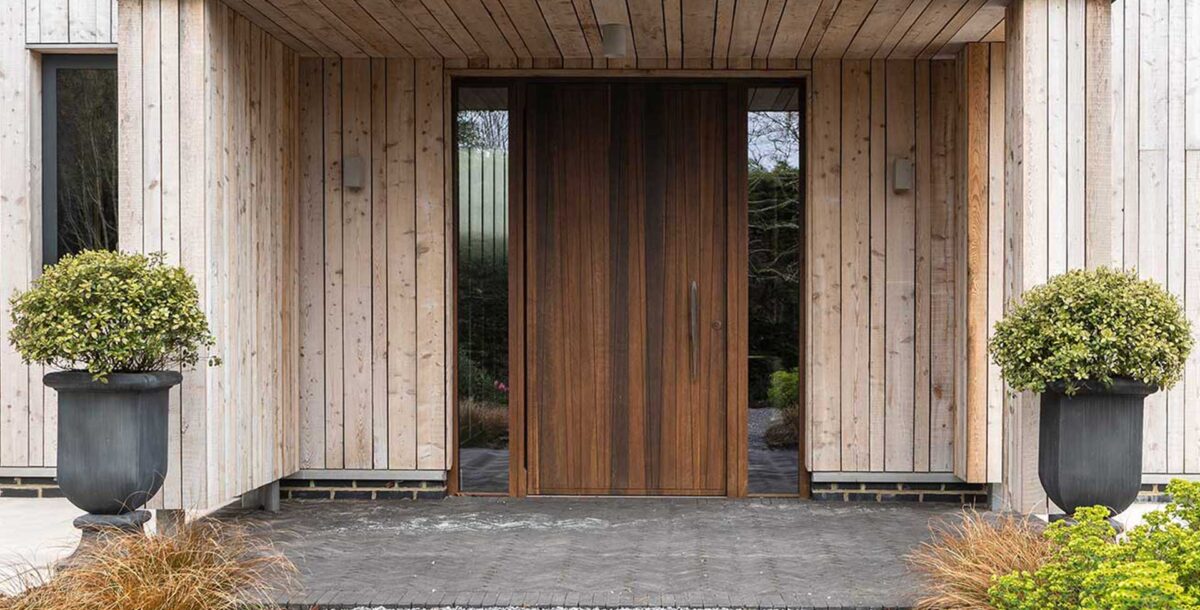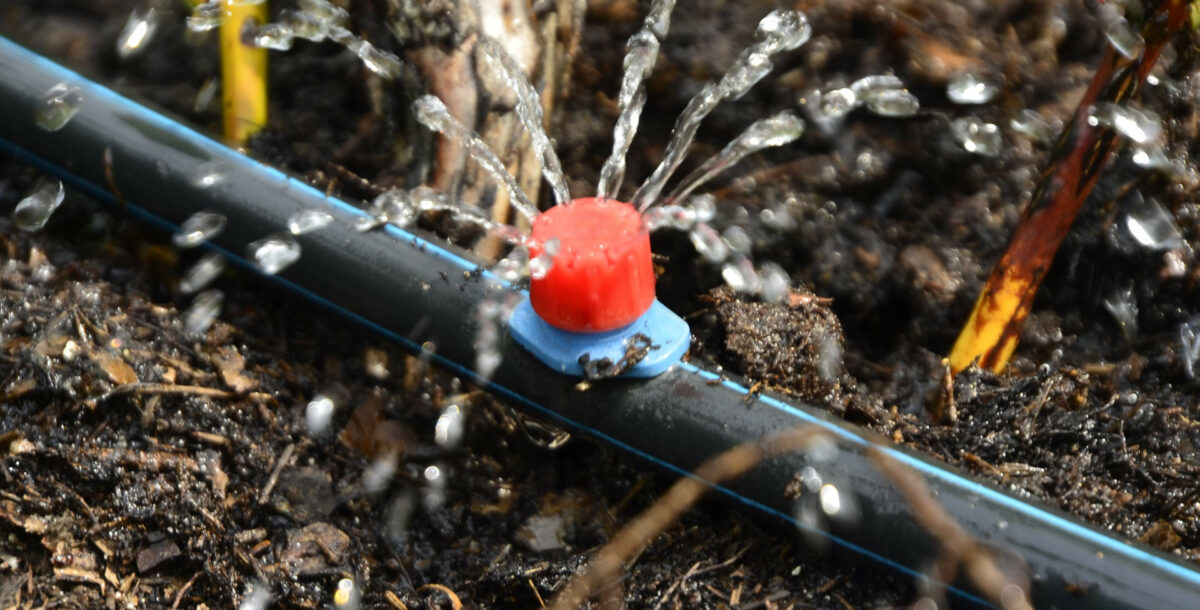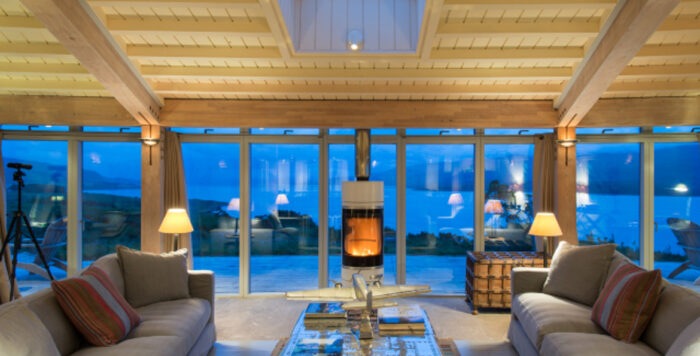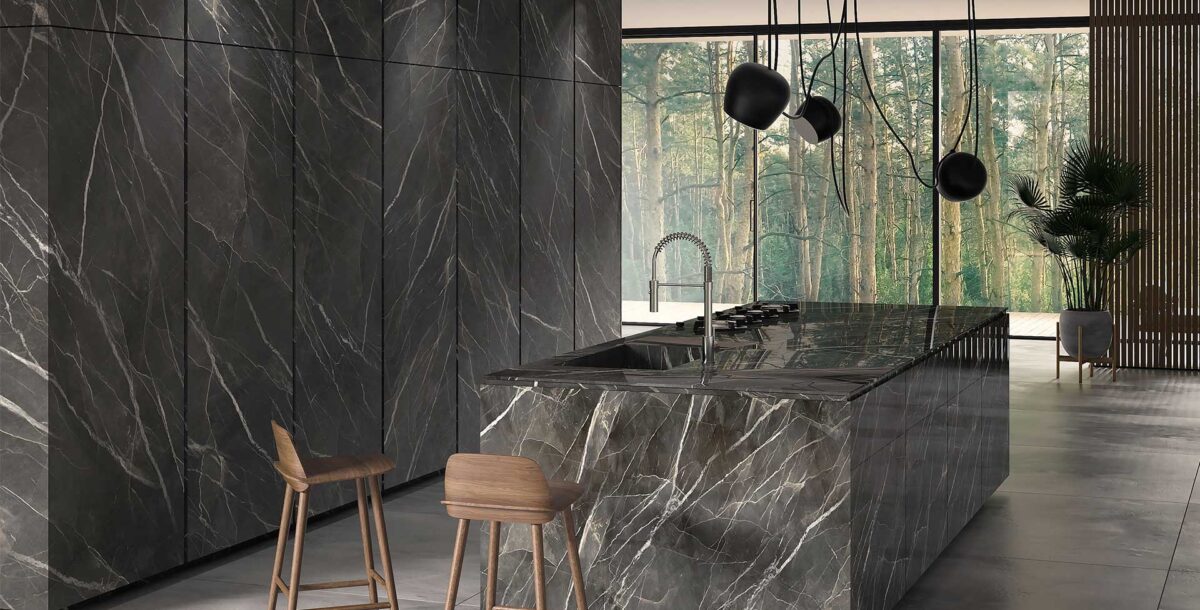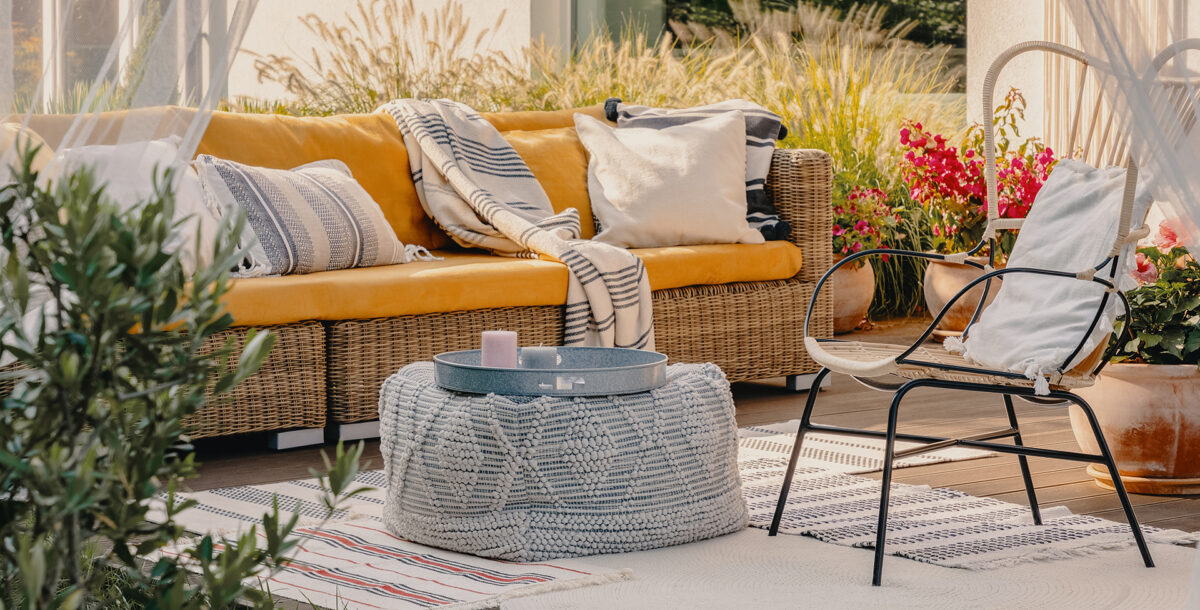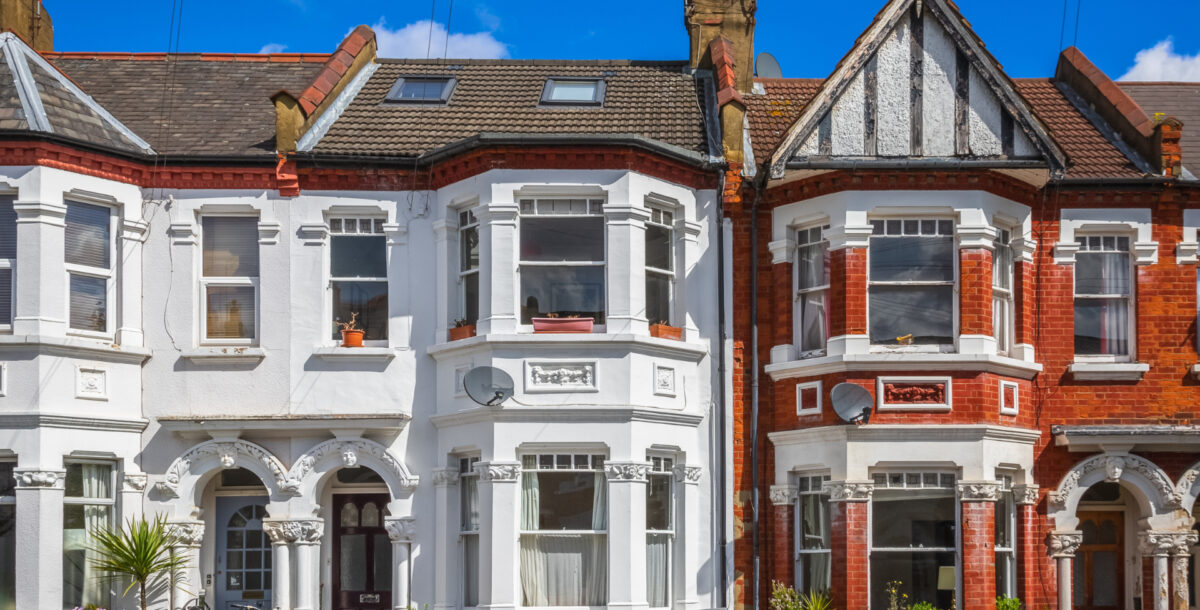Create space with the latest kitchen designs
We all want our decor to be anything but standard, particularly in the heart of the home
We all want our homes to be anything but standard, and nowhere is this illustrated better than the kitchen. Personalising the design with contrasting cabinetry and surfaces and a more eclectic mix of materials has become increasingly popular, as has combining matt with glossy or eye-catching metals.
‘Introducing unusual materials and finishes is the latest look for kitchens, creating a design advantage,’ says Dieter Berends at Urban Interior. ‘Two-tone designs can also reduce the cost of your project, allowing you to inject areas of excitement via a brightly coloured high-gloss central island, or smartly placed wooden breakfast bar.’
New takes on Shaker
While Shaker’s understated designs have been in demand for decades, the love of this timeless style has provided the opportunity for it to be reinvented in many ways. Whether it’s modifying the colour palette with cool pastels or tones of grey, adding an edge with industrial ironmongery or mixing it with a slim worksurface, modern Shaker fulfils a need for authenticity.
‘The trend for contemporary classic is strong,’ explains Graeme Smith at Alchemy Kitchens. ‘One example is the development of Shaker, where it’s given a modern treatment with a delicate frame and handleless design.’
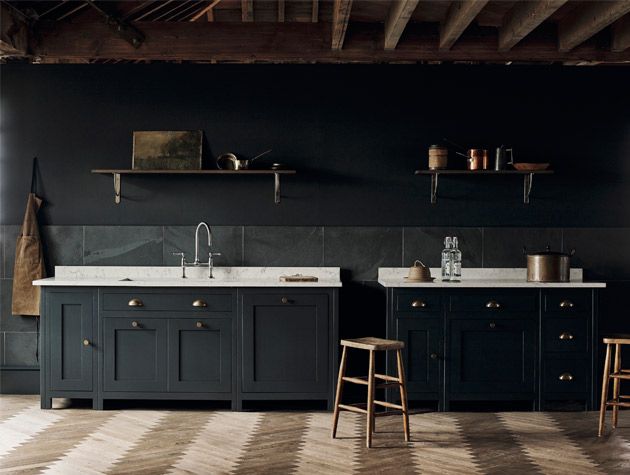
Complete contrast
A greater demand for colour in the kitchen still hasn’t eclipsed the simple sophistication of black and white.
But the latest take on monochrome is less about creating it with painted finishes and more about the textures used, like deep grey slate, marble-look quartz, smoky charcoal wood effects and bleached timbers, as well as invisible appliances in black or white glass.
The simple backdrop also makes it the ideal canvas for subtle embellishments and detailing, such as burnished metals, plush fabrics and geometric patterns.
Stone-effect surfaces
The desire for the look of natural materials with the practicality and consistency of man-made, stone-effect worktops, door fronts, cladding and splashbacks continues to feature in contemporary schemes.
However, the look isn’t limited to crisp white marble, with darker stones and concrete effects leading the way.
‘Stone and concrete finishes and decors are now used in a monolithic way,’ reveals Eddie Streader of Nolte Küchen. ‘Together with matching worktops and panels, a homogenous appearance is achieved, as if the kitchen was cast in concrete.’
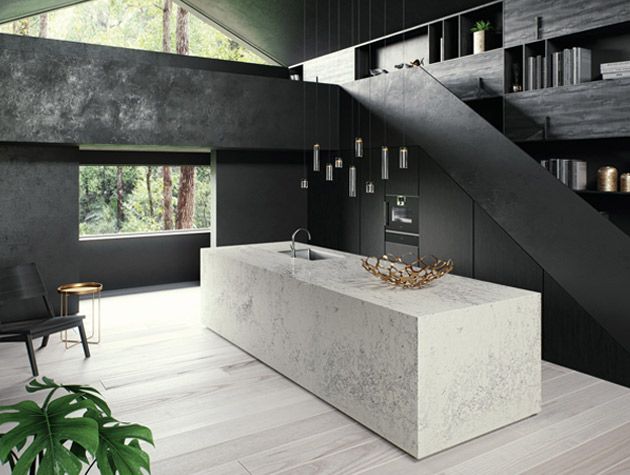
Luxury finishes
In a move from natural materials, there is now a trend to include sumptuous and unconventional surfaces in a kitchen. Rather than rely on high-end appliances to achieve an opulent look, the materials and textures have become an important element, from stainless steel to mirrored splashbacks.
‘Ceramic worktops that look like natural stone are being used in open-plan living areas to give the design a luxurious feel,’ says Daniele Brutto at Hub Kitchens (020 7924 2285; hubkitchens.com). ‘They’re set to be the next big thing as they’re hugely practical and come in a wide variety of colours and finishes.’
Wood and timber effects
Timber has made its kitchen comeback in a big way, combining warmth with texture and neutral versatility. Gone are the overpowering honey shades of the more traditional design, replaced with washed oak, grey-toned timbers and richly stained grains that evoke reclaimed woods and industrial luxe. Alongside stylish veneers and solid wood, timber-effect laminates have helped fulfil the trend for all budgets. ‘Continued improvements to faux materials have made them very realistic,’ Brutto continues. ‘They can now be produced with a texture, which makes them far closer to the real thing, yet they’re less susceptible to damage than real wood.’
Statement sink areas
Kitchen sinks have evolved from being somewhere to wash-up to design features in their own right. Now often equipped with accessories to turn them into practical prep areas, matching covers or a striking tap in an unusual finish, even the materials they are constructed from has seen a shift. Sleek composite stone, coloured ceramics and coordinating worktop materials have now made them a focal point, with extra functionality courtesy of three-in-one hot water taps or standalone boiling models.
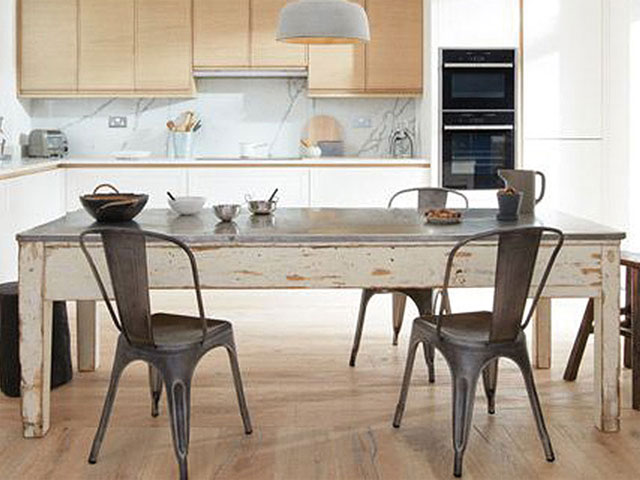
Blue is the warmest colour
Trend-watchers have been keeping an eye on the dark, inky indigo shades that conquered interiors and have now claimed the kitchen. ‘Blue is definitely the hot colour for kitchens this year,’ says Neil Lerner of Neil Lerner Kitchen Design (020 7433 0705; neillerner.com). ‘It’s a warm, rich colour that makes a bold fashion statement, while also being calming and reassuring. After all the whites and greys, it’s time to put some colour back and this is the perfect choice.’ Perhaps the best thing about dark blue is how well it works with neutrals, such as off-white and grey, while looking as stylish alongside raw timbers and flashes of chrome or copper.
Textured doors
Bringing balance to flat matt walls, low-sheen lacquers and honed worktops, textured door finishes remain a strong trend. While this can take the form of rough-hewn and unfinished raw natural materials, vinyl wraps, foils and lacquers that replicate the look and feel of stone, cement and wood are far more accessible. ‘Texture creates contrast and can be used in much the same way as colour,’ says Streader. ‘Technology has paved the way for the use and popularity of texture, so that today it is possible to imitate the look and feel of genuine materials, resulting in realistic decors with a 3D surface.’
Hot metals
Glowing metallic finishes have soared in popularity over the past few years. Whether that’s lacquered doors with a resemblance to stainless steel or brass, cabinets sprayed with powdered metal or copper handles and hinges, each adds a warm, glamorous feel to what can be a stark space. ‘Metal-wrapped doors and panels, and textured surfaces in the kitchen are an emerging trend,’ explains Jamie Telford at Roundhouse (020 7297 6220; roundhousedesign.com). ‘Metal wraps have depth and texture and can be interwoven with matt or gloss lacquers, book-matched veneers or textured finishes to create a layered effect. Plus, as they age they acquire a natural patina, adding to their beauty.’
